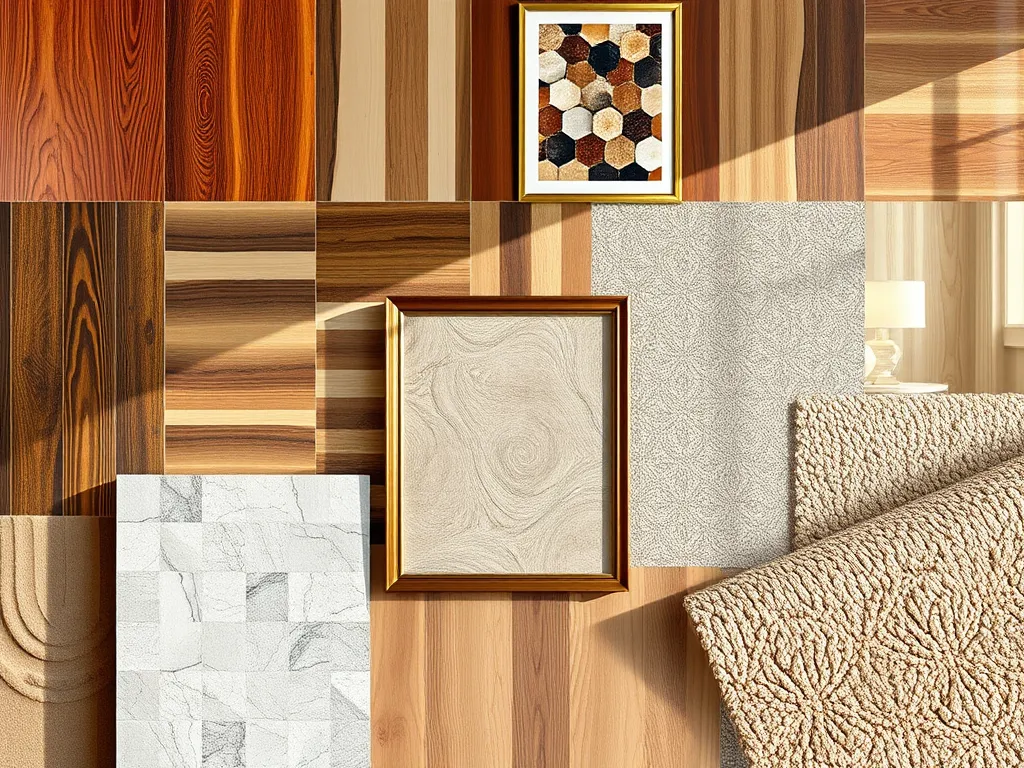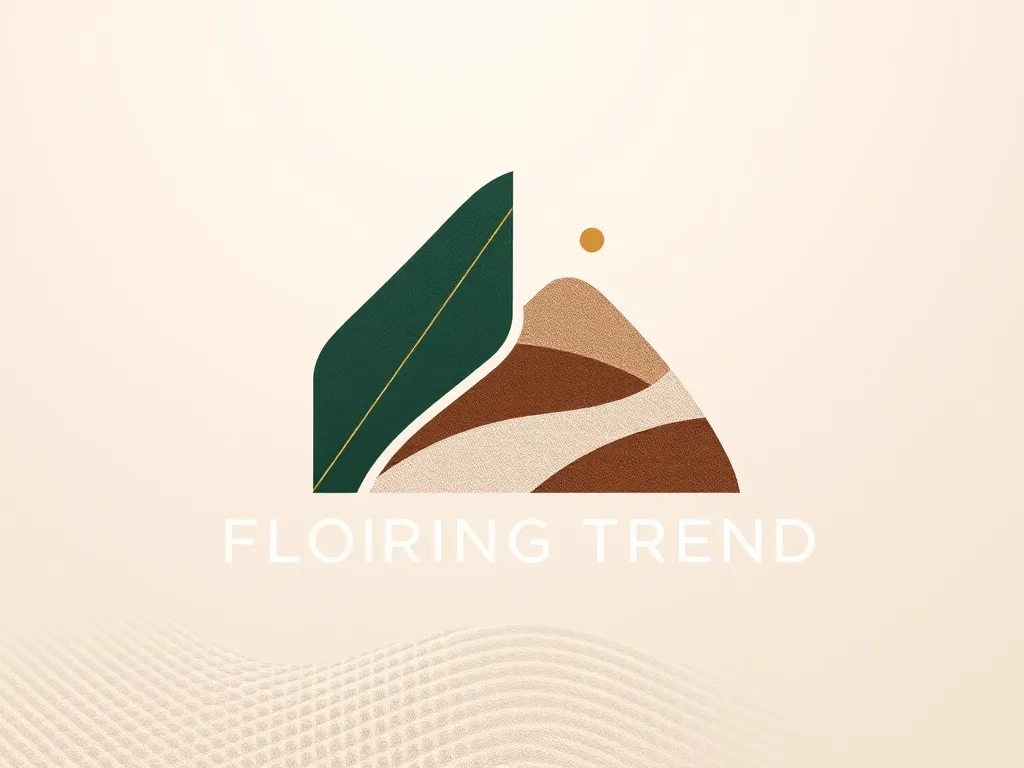Explore Comprehensive Reviews of Popular Flooring Options

Exploring Various Flooring Options for Your Home
When it comes to designing or renovating a living space, the choice of flooring is one of the most crucial decisions. Flooring options can greatly affect the aesthetics, comfort, and functionality of your home. Understanding the available flooring options will help you select the best fit for your style, budget, and lifestyle. In this article, we will delve into various types of flooring options, including hardwood, laminate, vinyl, tile, and carpet, along with their pros and cons, maintenance tips, and installation guides.
Hardwood flooring remains a timeless choice for many homeowners due to its natural beauty and durability. However, it's important to understand the variety of hardwood flooring options available, including solid and engineered hardwood, to maximize the benefits. Engineered hardwood, for instance, can be more resistant to moisture, making it suitable for basements and areas prone to humidity. On the other hand, solid hardwood offers a traditional look that can be refinished multiple times for longevity. Each option serves different needs and preferences.
Laminate flooring is another popular choice that mimics the appearance of hardwood, stone, or tile while being more affordable and easier to maintain. Its layer of high-density fiberboard makes it durable, though it may not hold up as well to moisture compared to other types. The ease of installation is a significant plus, attracting DIY enthusiasts who appreciate its tongue-and-groove mechanism. Knowing the best laminate brands will guide you in making a quality selection that suits your style and budget.
Vinyl flooring has seen a resurgence in popularity, primarily due to innovations leading to luxury vinyl planks (LVP), which offer stunning designs while being waterproof and easy to install. With various types of vinyl flooring available, including sheets, tiles, and planks, you can find the perfect option tailored to the demands of your space. Understanding the environmental impact of vinyl and comparing its costs to other flooring types will empower you to make an informed decision.
before making a decision on new materials, it’s essential to consider comprehensive Flooring Reviews for informed choices.
Tile flooring provides immense versatility, from ceramic to porcelain and natural stone, offering options for durability and aesthetics. With vibrant designs and patterns, tile can dramatically influence the overall ambiance of a room. However, each type has its maintenance requirements and cost considerations. Moreover, seeking insights into current design trends can help you choose the best tile flooring that not only meets your functional needs but also elevates the beauty of your home.
Hardwood Flooring Reviews
Hardwood flooring comes in two main types: solid hardwood and engineered hardwood. Solid hardwood is made from a single piece of wood, giving it durability and the ability to be refinished multiple times. Engineered hardwood, on the other hand, consists of a plywood base topped with a veneer layer of real wood, making it more stable and less prone to warping in humid environments. Understanding the differences can help homeowners select the appropriate type based on their living conditions and desired look.
When it comes to hardwood finishes, oil-based finishes tend to provide a warm glow and are highly durable, while water-based finishes dry quickly and have lower levels of volatile organic compounds (VOCs). Additionally, matte finishes offer a trendy, less shiny appearance, while glossy finishes add a touch of elegance. Each finish has advantages based on maintenance and desired aesthetics, enabling homeowners to tailor their choice to their personal style.
There are eco-friendly hardwood flooring options available, such as bamboo or reclaimed wood, which provide sustainable choices without sacrificing aesthetics. These materials have lower environmental impacts due to their growth rates and the recycling of wood logs. Additionally, look for certifications from organizations like the Forest Stewardship Council (FSC) to confirm the sustainable sourcing of hardwood.
Maintenance for hardwood floors involves regular sweeping and periodic refinishing depending on foot traffic and wear. Use soft brooms or vacuum attachments designed for wood to prevent scratching, and clean with specific cleaning solutions suitable for hardwood. Implementing proper maintenance can extend the life of hardwood flooring significantly and keep it looking beautiful for years to come.
The cost of hardwood flooring varies based on wood types and installation. Generally, domestic hardwoods like oak are more affordable, while exotic hardwoods like teak or mahogany can be quite expensive. Installation costs can also vary based on labor intensity. Considering long-term value and durability can aid homeowners in choosing the right flooring that fits their budget.
Laminate Flooring Insights
Laminate flooring has its pros and cons that make it suitable for different situations. The advantages include affordability, a wide variety of styles, and a quick installation process. However, it can be sensitive to moisture, which is a disadvantage in humid areas. Also, unlike hardwood, laminate cannot be sanded or refinished, which could limit its longevity.
Some of the best brands for laminate flooring include Pergo, Shaw Floors, and Mohawk. These brands offer varying collections with different designs, colors, and price ranges, ensuring that there's a suitable option for everyone. Researching reviews and performance ratings can also be useful for homeowners looking for quality flooring.
Installation of laminate flooring is often simple, with many products featuring a click-lock installation. Homeowners can easily install the flooring themselves, significantly reducing costs. It's important to prepare the subfloor properly and acclimate the laminate boards before installation to prevent future warping or buckling issues.
Durability is one of the main attractions of laminate flooring. It can withstand scratches and dents well, making it a popular choice for households with children or pets. Maintenance is also straightforward; regular sweeping and occasional damp mopping are usually sufficient to keep laminate floors in good condition.
Laminate flooring now comes in stylish designs that can mimic the look of natural materials like wood or stone, offering versatility in style. With advancements in printing technology, laminate flooring can achieve a high level of realism, making it a viable alternative for homeowners looking for aesthetic appeal on a budget.
Vinyl Flooring Evaluations
Vinyl flooring comes in two main types: sheets and tiles. Sheet vinyl is a continuous roll that provides a seamless appearance, making it great for water-prone areas. Vinyl tiles, however, come in square or rectangular shapes, allowing for intricate designs and easy repairs. Understanding these options can guide homeowners in determining what fits their specific needs well.
Luxury vinyl plank (LVP) stands out due to its durability, waterproof characteristics, and stunning aesthetics that mimic hardwood and stone. It is easy to install and maintain, making it a favorite among homeowners. The comfort it brings underfoot compared to harder surfaces is also a significant advantage, especially in living rooms and kitchens.
Environmental considerations for vinyl flooring include concerns over the production and disposal processes. Many manufacturers are making strides to create more sustainable options, so look for flooring made with recycled materials or those that have lower VOC emissions to ensure ecological responsibility.
When comparing vinyl flooring costs to other flooring types, it typically offers a budget-friendly solution without compromising durability or style. Vinyl is often cheaper than tile or hardwood, presenting an attractive option for homeowners wanting to remodel without breaking the bank.
Installing vinyl flooring is relatively straightforward; interlocking planks or tiles can simply be clicked into place, and sheet vinyl can be glued down. Ensure to prepare the subfloor adequately and allow vinyl to acclimate to the room temperature before installation for the best results.
Tile Flooring Options
Different tile materials, including ceramic, porcelain, and natural stone, provide diverse options for homeowners. Ceramic tiles are versatile and come in a wide range of colors and designs, whereas porcelain tiles are denser and offer more durability. Natural stone tiles, like slate or marble, bring a unique and luxurious feel but require more maintenance and sealing.
In 2023, design trends in tile flooring showcase bold colors, intricate patterns, and innovative layouts. Abstract designs and oversized tiles are making their mark, while textured surfaces provide additional depth. Homeowners looking to create a statement should consider incorporating these trends into their spaces.
Tile flooring maintenance involves regular sweeping and mopping, as well as periodic sealing, especially for natural stone. This care ensures a long lifespan and maintains the look of the tiles. Avoid harsh chemicals; instead, use gentle cleaners that won't damage the grout or tile surface.
When analyzing tile costs against other flooring options, ceramic and porcelain tiles often present an affordable option, especially for larger spaces. Natural stone tiles can be more expensive, but their unique aesthetic can justify the investment. Considering factors like durability and maintenance can help homeowners assess overall value.
Installation methods for tile flooring can vary depending on the type of tile used. Standard installation involves applying thin-set mortar to the subfloor and then placing tiles down. For larger tiles, a self-leveling underlayment may be necessary for a smooth, even surface. Ensuring precise cuts and layouts is critical to achieving a professional appearance.
Carpet Flooring Analysis
Carpet flooring comes in various fiber types, including nylon, polyester, and wool, each offering distinct benefits. Nylon is known for durability and resilience, making it ideal for high-traffic areas. Polyester is a softer, more affordable option, while wool provides a luxurious feel but requires more maintenance. Understanding these fiber types will assist homeowners in selecting the carpet that best meets their needs.
The best carpet brands vary by budget and preferences. For high-end options, brands like Karastan or Masland excel in design and quality, while more budget-friendly brands like Mohawk and Shaw also provide excellent performance. Researching different brands and their warranties can provide insight into making the best choice.
Carpet maintenance is crucial for ensuring longevity. Regular vacuuming is essential to remove dirt and debris, while professional cleaning every 12-18 months can remove stains and allergens. It's essential to use the right cleaning products that are suitable for carpet materials to avoid damage.
Understanding carpet padding options is important as it affects comfort, noise insulation, and durability. Different materials, like foam or fiber, provide varying levels of cushioning and support. Choosing the right padding can enhance the overall performance and feel of the carpet in your home.
In comparative costs, carpet is usually less expensive than hard surface flooring options, making it appealing for budget-conscious homeowners. However, considering long-term maintenance and durability is key; sometimes investing more in a durable hard surface may result in better value over time.
